Ockham Technology – winners of the Impact Maker Award! 8 May 11:39 PM (6 days ago)
ideon
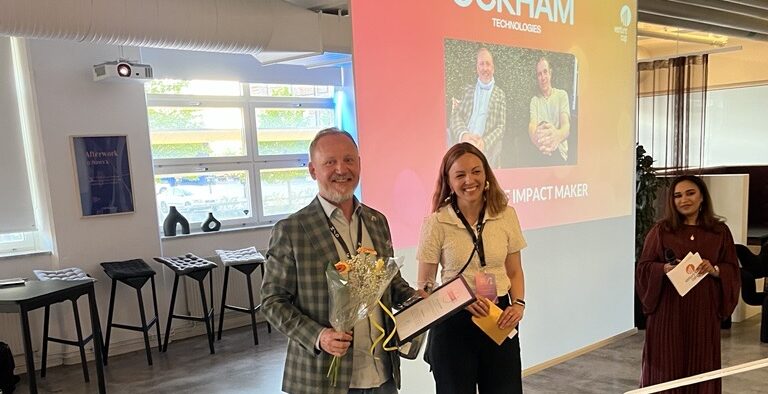
Ockham Technology – winners of the Impact Maker Award!
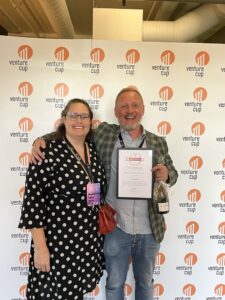
Ola Svennesson and Marie Greco, inflow coordinator at Ideon Science Park
Big congratulations to Ockham Technologies – winners of the Impact Maker Award at the Venture Cup regional final! Presented by SEB and Isabella Nordenfjord, this award goes to a startup with the potential to create positive, lasting impact on society.
Ockham is now one of the regional winners heading to the national finals this October, where the Startup of the Year 2025 will be crowned!
Ockham Technologies, part of KP Syd, is a research and development company based at Science Park in Lund. The company has developed – a patented technology that ensures precise dosing of cleaning concentrates. By reducing waste, transportation costs, and plastic consumption, this solution provides both economic and environmental benefits.
Read moread about Ockham here
Header picture: Ola Svennesson, CEO of Ockham Technologies accepting the price from SEB and Isabella Nordenfjord
This post Ockham Technology – winners of the Impact Maker Award! first appeared on ideon and is written by Nikita Lourenco-Calling
PluvioFlow: Predicting How Rainwater Moves 8 May 2:14 AM (7 days ago)
ideon
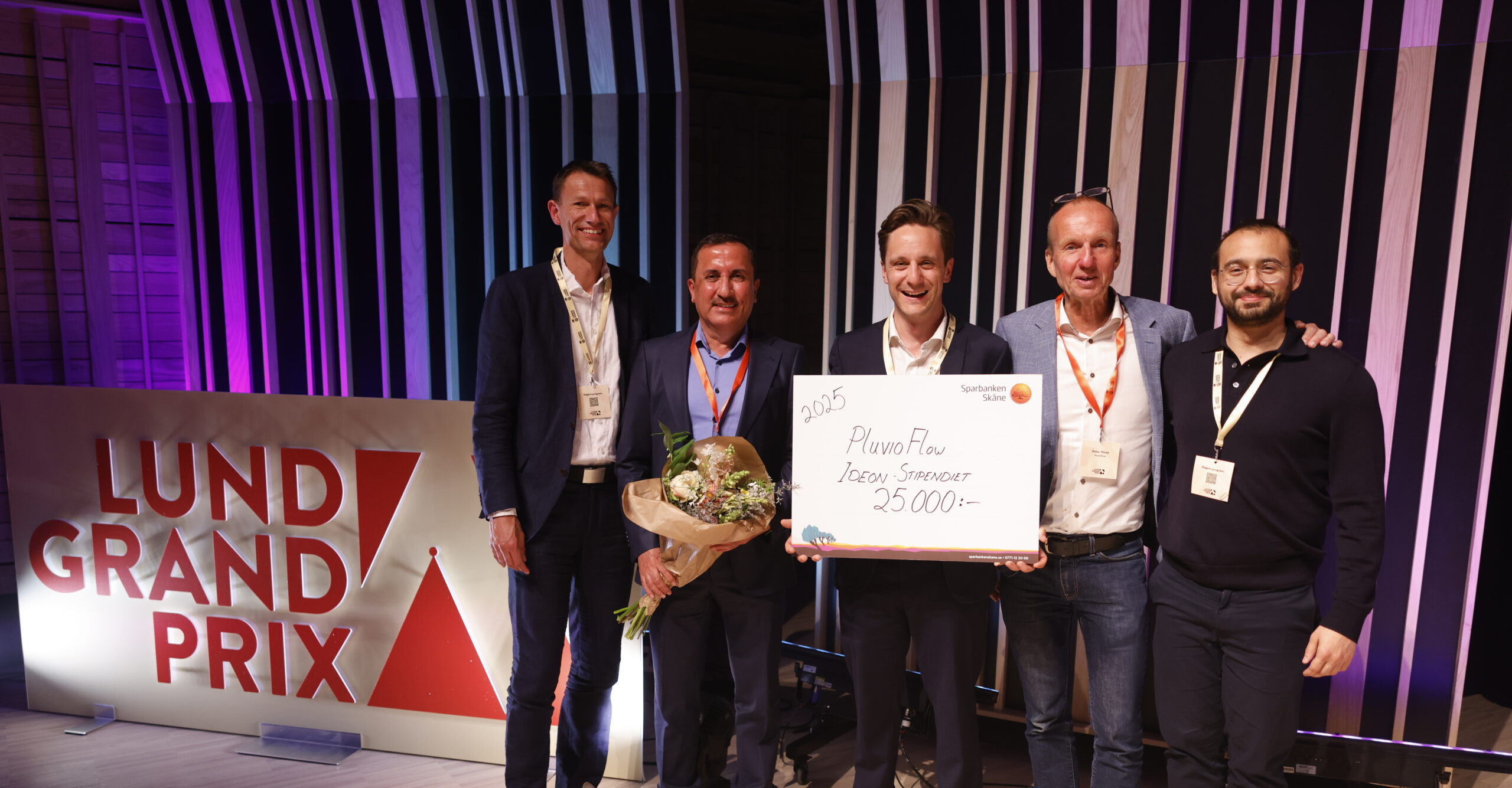
PluvioFlow: Predicting How Rainwater Moves
PluvioFlow originates from the long-standing research of three scientists: Professor Petter Pilesjö, Docent Andreas Persson, and Dr. Abdulghani Hassan. The latter is based at SLU, while the others are part of the GIS and geospatial research community at Lund University. Together, they represent backgrounds in geography, hydrology, and algorithm development.
Their joint research spans decades – with Petter having worked on these questions for over 35 years. The driving question has always been:
“How does rainwater actually move through our landscapes?”
Over time, the researchers have developed and published several algorithms that simulates how water accumulates during rainfall, how it flows through the landscape, that also can account for the dynamic aspect of flow – meaning how this changes over time.
Why It Matters
– If you know how much rain will fall in a specific area, and you can accurately predict how, when, and where it will flow, you can also anticipate flooding before it happens, says Jonatan Green Brzezinski, CEO of PluvioFlow. That creates an opportunity to reduce risk, prevent damage, and act in time.”
There are existing tools on the market.
– But they are often either too simple, assuming all water flows to the lowest point and misses crucial flow paths, or too complex, requiring enormous computer resources and skills not widely available”, says Jonatan.
PluvioFlow’s solution is unique because it is “just right”: scientifically advanced, yet practical and usable.
From Academia to Market
Despite the innovation, the original researchers were not driven by commercial ambitions.
“They published papers, shared their findings, and hoped someone else would take the next step”, says Jonatan.
Flooding is increasing due to two key reasons. The first is climate change. Warmer temperatures mean more evaporation, more moisture in the air, and more intense rain as a result. The second is urbanization. As we pave over land with asphalt and hard surfaces, less water is absorbed, and more water floods our streets and cities.
Recognizing the potential of their model, the researchers connected with mathematician Sam Sarwat, who helped the researchers develop the algorithm into a fast and usable tool with efficient programming.
While working at another water modeling firm, Sam stayed close to the field. When the need for better tools became clear, Lund University Ventures stepped in. They supported the creation of a company, helped establish a board and secure investors.
– By spring 2024, Sam was invited to join as CTO – and he accepted. ‘of course, I want to join, he said”!
Sam is now leading the development of a usable product based on the algorithm.
From MVP to Pilot Projects
By mid-2024, PluvioFlow had an early version (MVP) of the product, with potential users and market research already underway. Jonatan joined and outreach efforts began.
In early 2025, the team initiated pilot studies with key client segments in Sweden that are all getting more and more exposed to climate risk and must stay ahead of the curve.
– The current product works well, says Jonatan, even if it’s still a bit clunky in early-stage user experience. Our first pilot projects are already generating valuable insights.
The model requires quality input data, which municipalities and public agencies can often provide. The value? Better risk identification, more detailed analysis, and tools for faster decision-makers under increasing legal and climate-related pressure to adapt to a new reality.
Looking Ahead
The goal is to gather enough user feedback during spring and summer 2025 to validate the market, refine the product, and prepare for a full launch in late 2025.
And Jonatan?
Check out Jonatan’s profile here He has gained remarkable experiences from across the world.
Among other things he has a background in strategic communication and behavior change in across several conflict zones, joined an early AI vending-startup, studied sustainability, and worked internationally with the International Committee of the Red Cross in Papua New Guinea. He’s trained in international humanitarian law and has years of experience working with human rights, crisis communication, and complex systems.
Now as CEO of PluvioFlow, Jonatan leads the company’s product management, partnerships, and outreach.
Congratulations to PluvioFlow for being the recipient of the Ideon Stipend 2025!
The winner of the Ideon Stipend 2025 has developed an innovative, research-based solution to one of the major challenges of our time – sustainable water management in a changing climate. By combining advanced data analysis, hydrological models, and real-time monitoring, they help cities manage increasing rainfall and prevent flooding.
With a strong foundation in research from Lund University and based at Ideon Science Park, the team has demonstrated impressive drive, technical excellence, and a clear growth strategy. Their work contributes to building more resilient societies.
Previous stipend recipients:
2018: Björkström Robotic
2020: Cicada Health och Xenergic
2021: Resilio
2022: Mantis Photonics
2023: Strominate
2024: AdamanT Quanta
This post PluvioFlow: Predicting How Rainwater Moves first appeared on ideon and is written by Nikita Lourenco-Calling
Ockham Technologies: Innovating for a Sustainable Future 28 Apr 6:20 AM (16 days ago)
ideon

Ockham Technologies: Innovating for a Sustainable Future
Ockham Technologies, part of KP Syd, is a research and development company based at Ideon Science Park in Lund. The company has developed Dosify – a patented technology that ensures precise dosing of cleaning concentrates. By reducing waste, transportation costs, and plastic consumption, this solution provides both economic and environmental benefits.
From Toilet Paper to Technological Innovation
Ockham Technologies has its roots in KP Syd. It is a family-owned company founded in 1936 by Karl “Kalle Papper” Svensson in Karlskrona. During the tough times of the 1930s, Kalle realized that some products would always be in demand – and started selling toilet paper. Since then, KP Syd has evolved into a key player in the cleaning and hygiene industry, with strong customer collaboration at its core.
Today, KP Syd is run by the brothers Svennesson.
–The idea for Dosify was born out of a real customer problem: overdosing of cleaning concentrates led to unnecessary waste (and sticky floors), short shelf life, as well as increased safety risks for users, he explains. It also had a significant environmental impact due to the excessive transportation of water across the road network.
Ockham Technologies was created to solve this problem – with the goal of providing a sustainable, precise, and cost-effective solution.
Technology with Circularity at the Core
Through collaboration with universities, industry, and innovation partners, Ockham Technologies has developed a solution that revolutionizes the dosing of cleaning agents.
The system works like a coffee machine: Dosify leases its machines to cleaning companies, which use 100% reusable bottles. These bottles can then be ground down and repurposed for new 3D-printed containers, creating a strong circular model.
–The machine integrates advanced technology, including weight sensors that detect the remaining liquid in each bottle.
In partnership with DigIT Hub and Blue Science Park, Ockham Technologies is also developing traceability systems that allow customers to report chemical usage data to environmental labeling programs such as Svanen (the Nordic Swan Ecolabel).
A Growing Ecosystem of Customers and Partners
Potential customers include facility management companies, major retail chains such as Dagab, ICA, and Coop, as well as municipalities and hospitals.
– A significant opportunity exists in healthcare, where one of the market leaders, consumes 600,000 plastic bottles annually – with a total of one million bottles being incinerated each year.
Ockham Technologies has also partnered with Sustainable Business Hub that provides a neutral platform that brings together businesses, municipalities, and academic institutions to accelerate green innovation and create new business opportunities. The Swedish Environmental Protection Agency (Naturvårdsverket) has also highlighted the need for new regulations regarding sustainable chemical management.
Ockham Technologies is actively working to be an innovation partner in this transition.
The Future – Scaling and Validation
– We are currently in a critical validation phase. Our solutions are being tested and refined with customers before full-scale production, Ola says. The goal is to certify and CE-mark the machine, with plans to deliver 50 units in the coming year.
Through the Navigator Scale Up program, Ockham Technologies has strengthened its business development, with experts in legal matters, marketing, and process management helping to build a solid growth strategy.
– Considering aspects of ESG are a key part of our vision and we want to ensure long-term sustainability in line with the SDGs (sustainable development goals).
Ockham Technologies shows how technological innovation, circular business models, and sustainability-driven partnerships can create a better future – where precision dosing of cleaning agents is a small but important part of the transition to a more sustainable world.
The vision
- The Swedish Environmental Protection Agency (Naturvårdsverket) envisions a future where consumers and businesses can purchase liquid products in refill containers, promoting sustainability and reducing waste. Their vision focuses on encouraging the use of refill stations and reusable packaging as part of a broader effort to transition towards a circular economy. This initiative aims to minimize plastic consumption, reduce transport-related emissions, and lower the environmental impact of products throughout their lifecycle.
- Naturvårdsverket’s goal is to enable a system where refillable containers are commonly used, making it easier for consumers and businesses alike to reduce their ecological footprint. They advocate for the widespread availability of refill options, making it simple and cost-effective to choose sustainable alternatives over single-use packaging.
About the founders
Ola Svennesson is the CEO of Ockham Technologies. With a background in both entrepreneurship and science, he has a deep understanding of technical solutions that support sustainability. Before founding Ockham, Ola had extensive experience in various companies, and his passion for creating sustainable solutions is central to Ockham’s mission.
He has been an advocate for reducing waste and improving efficiency in the cleaning and sanitation industry through Ockham’s innovative dosing technology.
Paul Svennesson is the business development and strategy expert at KP Syd, the parent company of Ockham Technologies as well as the COO of Ockham.. He works closely with the leadership team to create growth strategies and facilitate the scaling of the business. Paul’srole also involves guiding the company’s long-term vision, overseeing operational improvements, and ensuring KP Syd and Ockham Technologies stay on track with their sustainability and business objectives.
Both brothers have been integral to the success and growth of Ockham Technologies, contributing to the company’s innovative approach to sustainable solutions.
Dr. David Wensbo Posaric, CSO, is an affiliate of Biomedical Engineering at the Faculty of Medicine at Lund University. His area of research and interest vastly span from organic chemistry to applied medical technology. David has a long experience in R&D within the fields of drug development and novel medicinal technology. In the public debate, he has advocated the scientific method as a basis for scrutinizing bold claims often associated with new technological innovations.
David is a co-founder of Ockham Technologies, where he devotes his time and expertise to the identification and development of novel sustainable technical solutions.
About the name
Ockham’s Razor, the philosophical principle, suggests that the simplest solution, or the one with the fewest assumptions, is usually the best. It is often stated as:
“Entities should not be multiplied beyond necessity.”
This means that when faced with multiple explanations or solutions, the one that requires the fewest new assumptions is most likely to be correct. It is widely used in science, problem-solving, and decision-making to cut through complexity and focus on what is most likely to be true.
For Ockham Technologies, the name reflects their approach to innovation—creating simple, efficient, and effective solutions to real-world problems.
This post Ockham Technologies: Innovating for a Sustainable Future first appeared on ideon and is written by Nikita Lourenco-Calling
Storytelling, Social Media & Self-Discovery: The Creative Journey of Anders Hallberg 28 Apr 6:10 AM (16 days ago)
ideon
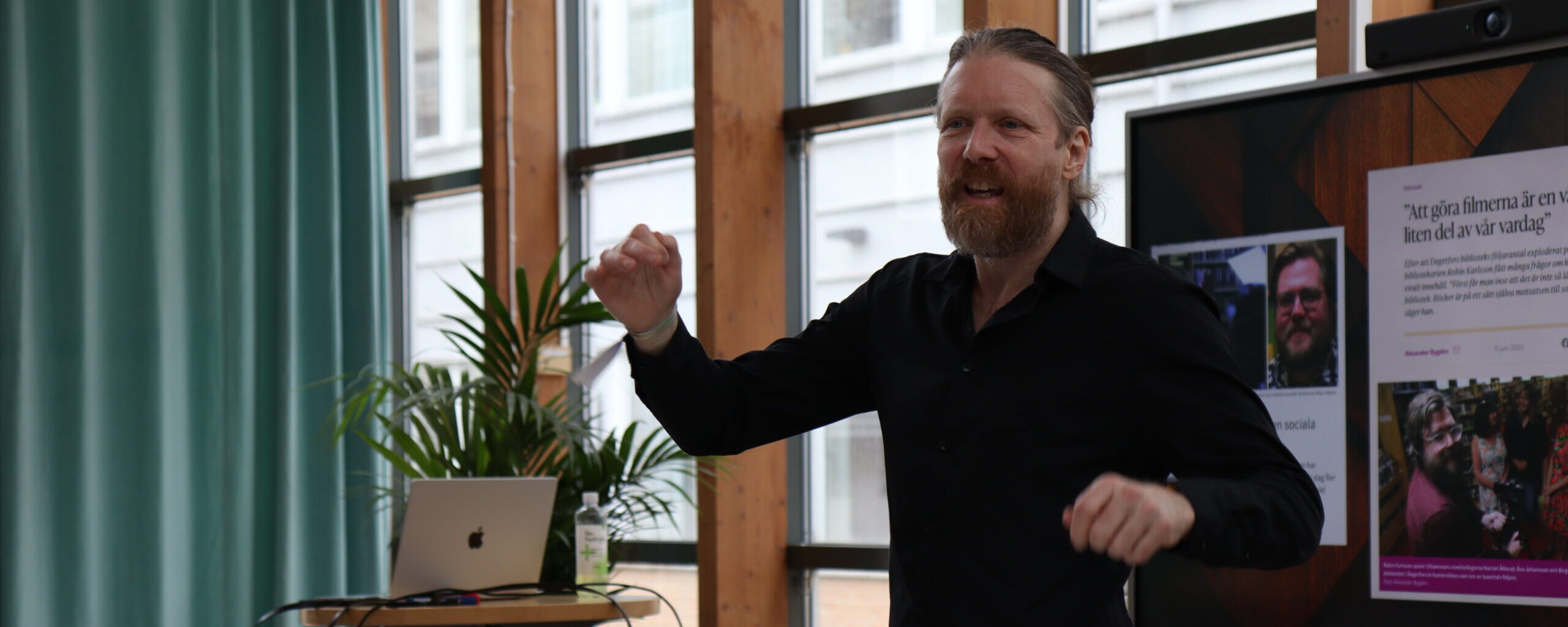
Storytelling, Social Media & Self-Discovery: The Creative Journey of Anders Hallberg
What do you get when you mix a role-playing nerd, musician, strategist, and a man who sacrificed everything for love? You get Anders Hallberg – a storytelling force of nature who turned a personal crash into a creative calling.
Today, Anders works primarily with Visit Halland, but also operates as a hybrid entrepreneur, strategist, speaker, and coach, helping organizations build narrative-driven strategies that inspire, engage, and stand out in an overwhelming digital landscape.
But let us rewind a bit.
From heartbreak to hashtags
“I moved to Borås for love. My life crashed. I moved to Malmö with no job and no relationship. I had nothing — but I had a story.”
Anders began sharing pieces of that story online; raw, honest, vulnerable. To his surprise, people resonated. They connected. He found courage in that connection and discovered the power of storytelling. He printed his first business cards.
The rest, as they say, is history.
Why storytelling matters now more than ever
We live in a world of “smombies”; smartphone zombies swiping, scrolling, and drowning in content. The internet is overflowing with information, distraction, and manipulation.
“We’re met with disinformation, troll factories, rage bait. It’s easy to lose hope. But that’s exactly why we need you. To spread light. Make people smile. Think. Feel. Connect.”
Storytelling, Anders says, is one of our strongest tools for building trust, community, and purpose, especially on social media.
Why are people even on social media?
According to Anders’ take on the latest Swedish internet statistics:
- 46% are there to feel connected
- 28% want to learn something
- And the rest? They’re looking for meaning, belonging, and maybe a laugh
If you are a company or creator on social media, he says, your job is simple:
- Entertain
- Engage
- Teach
- Put yourself in front of the camera
- Be personal and natural
- Play on and evoke emotions
- Share and give knowledge instead of selling (the very core of content marketing)
- Do not forget the love !
Build your own storytelling strategy (yes, even on TikTok)
Anders breaks it down into three clear steps:
- Know your audience
Who are they? What do they need? What do they care about?
Engage with them. Ask questions. Create personas – real, vivid, relatable characters you speak to.
Engage on a regular basis.
- Choose your channels
Be where you feel comfortable, confident, and creative. Instagram? LinkedIn? TikTok? Pick the platform where you can show up consistently and be you.
- Have something to say
Do not post in a rush. Do not post just to be visible.
“What makes you unique? What is your perspective? What do you want people to feel or do after they have seen your content?”
5 story elements for better posts (yes, even for brands)
Using Frodo from The Lord of the Rings as an example, Anders outlines the building blocks of a great story, whether you are writing a LinkedIn post or crafting a campaign.
- A protagonist – Someone we follow (could be your customer, or yourself)
- A goal – What do they want? What are they chasing?
- Strengths – Make us admire them
- Weaknesses – Make us relate to them
- Resistance – The struggle, the conflict, the antagonist (hello Sauron)
“Stories are about change. And change comes from choices. Show the choices your character makes and the transformation that follows.”
What’s your story?
Anders encourages everyone, especially creatives, founders, and communicators, to reflect on their own journey.
Ask yourself:
- What do I want?
- What is my strength?
- What is holding me back?
- What is my crown? (your goal, your impact)
- How can I include my audience in that journey?
“Every person, every brand, every movement has a core story – like the back of a VHS tape or a Netflix synopsis. What is yours?”
Anders also encourages us to use Chat GPT to craft our core stories:
“Let Chat GPT interview you, question by question.”
An example prompt “Dear Chat GPT, you are a creative strategist. Please help me with my core story. Interview me one question at a time about me…”
Explore together with Chat GPT until you have a core story that well describes your business/you.
And finally… Don’t forget the love ❤️
Yes, social media can be frustrating. The comments can be cruel. The trolls are real.
But Anders leaves us with this:
“The more hate people throw at us — the more love we throw back.”
And if there’s a storytelling revolution to be had, he’s leading it. With joy. With self-distance. With purpose. And with a very nerdy, very brave heart.
Want to craft your own story-driven strategy with Anders?
Reach out, slow down, and start with what really matters:
Who are you? What do you want? And who needs to hear your story?
This post Storytelling, Social Media & Self-Discovery: The Creative Journey of Anders Hallberg first appeared on ideon and is written by Nikita Lourenco-Calling
Martin Gren: From Disco Lights to Global Scale, and Still the Mascot of Axis 28 Apr 5:30 AM (16 days ago)
ideon
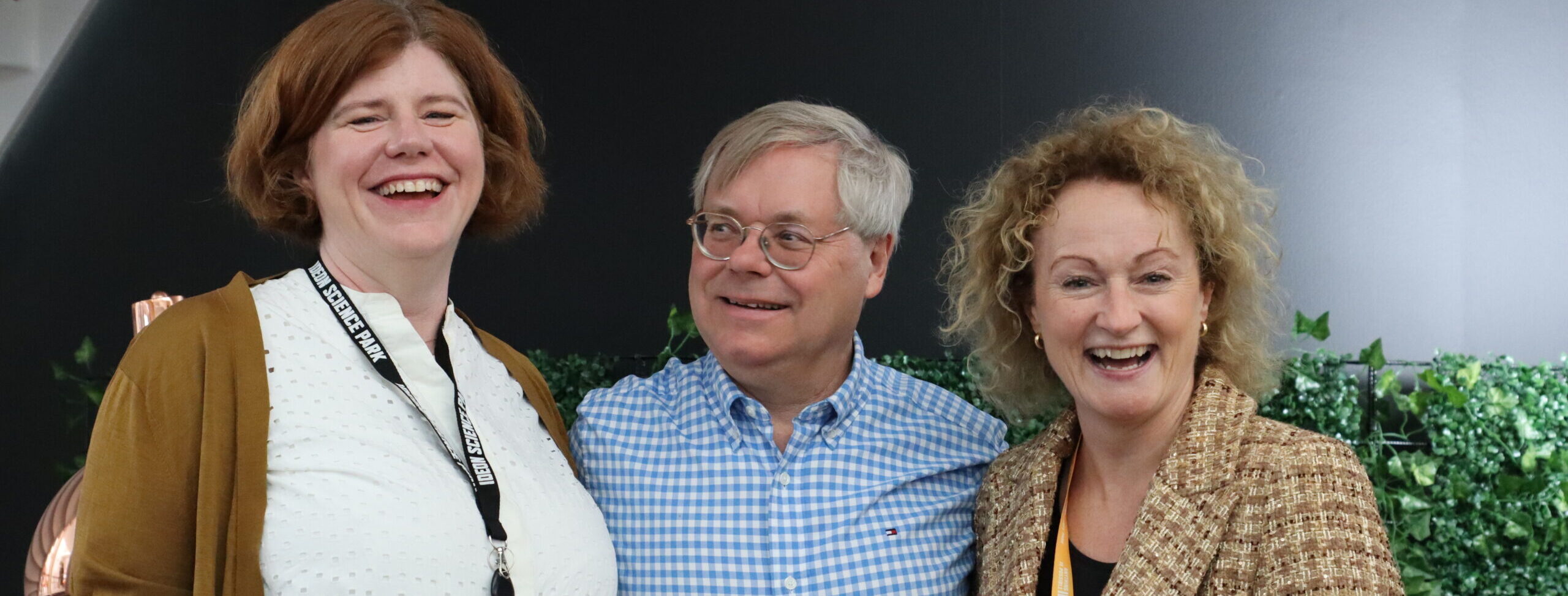
Martin Gren: From Disco Lights to Global Scale, and Still the Mascot of Axis
With humor, humility, and the sense of perspective on himself of someone who has seen a lot, Martin Gren reflects on a journey that started as a provider of disco light controllers at school and led to one of Sweden’s most iconic tech companies. As co-founder of Axis Communications, he is not just an entrepreneur, but an entertaining, tech-nerdy storyteller as well as the ‘unofficial’ (?) mascot of a company that scaled long before “scale-up” was a buzzword.
Martin was interviewed by Sara Egidius, Ideon Science Park’s PMO.
“Entrepreneur? That’s what you become when you cannot people told me”, he laughs. “Everyone in my family were teachers. I just knew I did not want to work for the government.”
The “scene of the crime”: Kuvösen in the 1980s
We meet Martin back where it all started – at Ideon Science Park in Lund, or as Sara called it, the ‘scene of the crime’.
As students at LTH (Lund Faculty of Engineering, )Martin and co-founder Mikael Karlsson were consultants, moonlighting on early-stage electronics projects. In 1983, they formed their consultancy.
“We did not want to be consultants forever. We always wanted to build a product company.” Martin says.
In 1984, they found their product; network solutions for scanners and printers. The small consultancy consisted of Mikael and Martin who hired their former fellow students as sub consultants.
That year, Axis was one of the six early companies to move into the newly developed area, joining players like Ericsson and Bolin.
Building with respect – and a little fear
Martin also shares how his leadership style formed early on, a bit out of necessity.
“I’m short, wear glasses and in my early career I didn’t want to get beat up,” he says, joking.
“So, I treated everyone, my classmates, my colleagues and lately resellers, with the same respect.
The principle of respect carried into the foundation of Axis.
The business model that built Axis
Axis did not just build a product but built a way of doing business. When Axis launched the world’s first network camera, the true innovation was not just the technology. The business model that allowed it to scale across borders.
Martin’s colleague, co-founder, Keith Bloodworth, a British sales guru (celebrated on his birthday that very day), shared a simple but revolutionary insight:
“Be the best friend of your reseller. Never sell direct.”
That became Axis’ key principle; trust your partners.
“Stick to the model and do not make exceptions to it. And it worked.”
Scaling smart – and slow
Axis did not explode overnight. Martin has saved every annual report and recalls the journey.
“We doubled every year. That is 30% annual growth; a solid, sustainable scale-up.”
Germany was the first real target market. Then came Japan. Surprisingly, Axis biggest market in the mid-90s. Cracking the U.S. market took 15 years.
“In Japan, we were methodical. In the U.S., it took us a while to understand how to do business there.”
Today, Axis has around 90,000 integrators, 200+ distributors, and a global partner network.
“We still stay true to the original model. And Axis is still built on trust, which is something we are very proud of.”
Crises, cashflow, and kindness
Despite Axis being a tremendous success story, it has not all been smooth sailing.
“We hired a terrible high-level manager in a crucial position once. They literally took the job just to be fired,” Martin says with a giggle.
“We were close to bankruptcy a few times. Great business, but crises come. Currency swings, late payments, liquidity problems, even when you are profitable.”
He shares a moment with SEB (bank) in the early ’90s:
“We called our bank to ask for an extended credit line. They said, ‘What a coincidence – we are also out of cash.’ But we had a good relationship. We were the only company in Lund sending them monthly reports. They raised our limit and bent the rules a little bit for us. Since they we have paid back everything.”
Doing business with decency, he insists, makes all the difference.
From tech builder to investor – but always a contrarian
The core team of Axis never took venture capital for Axis.
Today, Martin invests, and has been doing so for a while, albeit not in early-stage startups directly. He prefers scale-ups: €5–10M in revenue and strong growth.
“We love startups, do not get me wrong, but unfortunately, we do not have the time to babysit. We invest in VC funds instead and support companies with core competencies in life science and IT: Cellavision, Camurus, Bone Support, and Novotek.”
He avoids hype and trends.
“AI? Sure, we invest. But we look for what not everyone is doing. We like being contrarian. That is where the real opportunities are.”
Still the mascot and still learning
Martin still spends about half his time at Axis.
“These days I am kind of a mascot. I travel, meet partners, and keep the culture alive.”
What would you have done differently?
“Well, it all worked out well. Times were harder back then. I would say the climate for entrepreneurship is better now. In 1993, you really had to fight for it. Today, it is ‘you can do it!’ from day one.”
Sara’s last question: “Does it seem unreal, at times, the fact that Axis has become such a huge success?”
Martin confesses that he feels most at home at small offices. This is why he really like Axis’ three-person office in South Africa, next to a bird sanctuary.
“We call it the bachelor’s den. But I really like it.”
This post Martin Gren: From Disco Lights to Global Scale, and Still the Mascot of Axis first appeared on ideon and is written by Nikita Lourenco-Calling
Time to Accelerate Defense Innovation – for Sweden’s Security and Sovereignty 17 Apr 1:52 AM (28 days ago)
ideon

Time to Accelerate Defense Innovation – for Sweden’s Security and Sovereignty
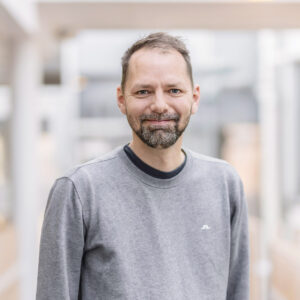 With increased investments in total defense and a rapidly evolving threat landscape, Sweden has all the conditions necessary to strengthen its defense capabilities. But to do so, we need to accelerate innovation in the defense and security sectors.
With increased investments in total defense and a rapidly evolving threat landscape, Sweden has all the conditions necessary to strengthen its defense capabilities. But to do so, we need to accelerate innovation in the defense and security sectors.
“There is a lot of talk,” says Johan Vaernholt, Head of Business Development at Ideon Science Park and former career officer. But the action is not following. Defense innovation in Sweden is still moving too slowly. And that is not just a technical issue – it is a strategic vulnerability.
Threats are evolving faster than our systems
Cyberattacks, AI-driven systems, drone technology, and information warfare. The conflicts of the future are already here.
Other countries are experimenting, collaborating, and scaling technology while we in Sweden remain stuck in the investigation and planning phase,” says Vaernholt. We need operational structures, test environments, and long-term partnerships where technology can be validated, scaled, and applied.”
Sweden does not need more vision documents.
What we need is defense innovation at startup speed – not government speed.
That is one reason why Johan is among the initiators behind a new platform for defense innovation at Ideon Science Park.
NATO opens new doors – and raises expectations
Our NATO membership comes with expectations – that Sweden contributes, is technically compatible, and delivers innovation. But it also brings opportunities: for collaboration, exports, investments, and shared resources.
These opportunities must be made accessible not only to traditional defense contractors but also to companies operating in other sectors.
Swedish businesses – large and small – have a chance to grow into a new role as suppliers and developers of dual-use technologies. But doing so requires building bridges between the private sector, academia, and the defense community.
There are ideas – but no clear path forward
Sweden leads the world in fields such as sensor technology, AI, cybersecurity, and communication. We have startups ready to deliver advanced imaging, cyber protection solutions, and AI-driven decision-support systems.
But too few of these ideas ever reach testbeds, procurement processes, or the defense administration,” says Vaernholt. There is a lack of neutral platforms where the Armed Forces and defense industry can meet with startups and researchers – where true innovation meets real needs, and development is actually allowed to happen.”
Ideon Science Park has spent the past two years developing a framework and launching initiatives to support this goal – from drone testbeds to collaboration on semiconductors and dual-use solutions.
Ideon’s role is to serve as a connector between academia, SMEs, large industry, and public stakeholders – to create long-term collaborations, not just short-term projects.
Swedish companies want to contribute, but are not given space
Tech-driven companies in Sweden want to help,” says Vaernholt. But they’re often met with complex regulations, slow procurement processes, or unclear entry points.”
Many startups say the same thing:
We have solutions – but we don’t know how to reach the right people.”
At the same time, defense companies often have challenges that could be solved by exactly the skills and technologies these smaller actors offer.
What is missing is a neutral arena for matchmaking, collaboration, and open dialogue.
What needs to happen now?
Sweden needs a national framework for defense innovation – one that enables:
- Testbeds and rapid pilots to validate technologies
- Accelerator programs to support early-stage, high-potential solutions
- Structured public investments with staying power and impact
- Open collaboration between the innovation ecosystem, defense authorities, and industry
You are needed. Join us at Försvarsdagen
Defense innovation cannot wait. We need to act now to ensure Swedish technology is put to good use – both for our security and as a contribution to international cooperation.
On April 29, Day of Defense, Försvarsdagen will take place at Ideon Science Park. It will gather stakeholders from industry, academia, defense, government, and the innovation ecosystem—people who want to and can spur defense innovation.
Are you someone who wants to contribute, influence, or understand how your skills can make a difference?
Then this is where you should be.
Photo: Unsplash, Specna Arms
This post Time to Accelerate Defense Innovation – for Sweden’s Security and Sovereignty first appeared on ideon and is written by cece
CEO Network: “Cybersecurity is Broken. Let’s Fix It.” 7 Apr 5:38 AM (last month)
ideon
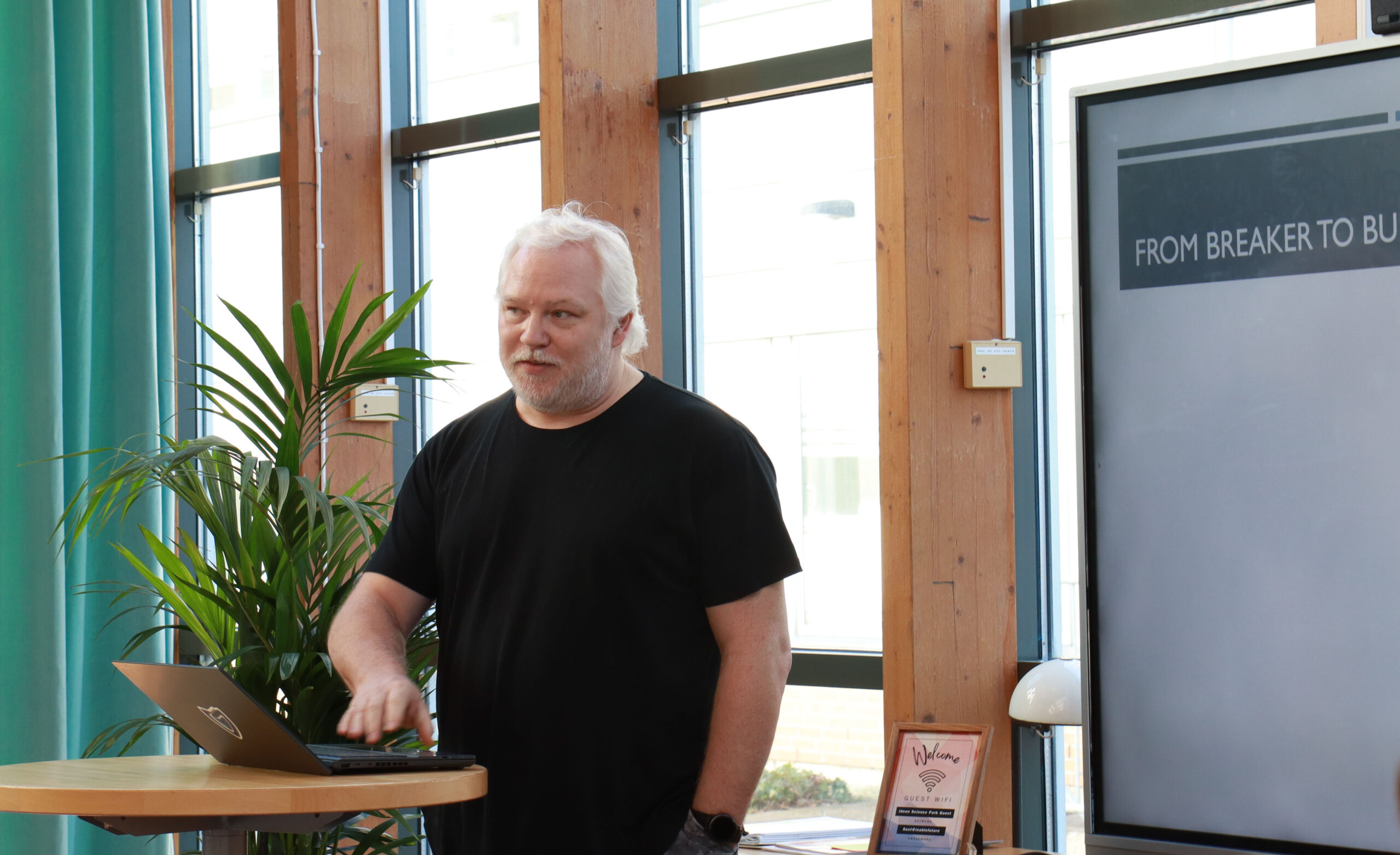
CEO Network: “Cybersecurity is Broken. Let’s Fix It.”
Carl Hendrix on the Future of Cyber Defense and the Power of Dynamic Keys
Cybersecurity is broken. Static protections are failing. Attacks are evolving faster than defenses can keep up.
“It’s time for a rethink,” says Carl Hendrix, founder and CEO of InnoviGuard – and creator of a new groundbreaking technology known as P55.
Carl’s background is anything but ordinary. He has always been curious and started before the age of 10 to take radios apart and figure out how to put them back together. By the age of 10, he was hacking into telecom systems – not to cause harm, but to understand how things worked so he could fix them.
That mindset – to break things to make them better – shaped his journey. Over the years, Carl has worked with Swedish intelligence (MUST), the Swedish police (Rikspolisstyrelsen), and global companies like Tetra Pak, combining deep technical expertise with a relentless curiosity.
The Cost of Staying Static
Today, the average cost of a cyber breach is estimated at $4.88M – not including reputational damage, legal fallout, or lost customers.
Despite major players like Microsoft spending billions on cybersecurity, acquiring specialized firms, and deploying immense computing power, many organizations still rely on outdated, static defenses.
“We’re using 30-year-old tools to solve next-generation problems,” Carl says.
The Threat Landscape: A Quick Breakdown
- Here are some of the most common and dangerous attack types Carl sees in his work – and why they matter:
- API key attacks – Stolen keys used to access systems undetected.
- Man-in-the-middle attacks – Intercepting communication between two systems.
- Replay attacks – Reusing valid data transmissions to gain access.
- Credential stuffing & brute force – Trying large numbers of passwords rapidly.
- Insider threats – Employees misusing access, often unintentionally.
- Key injection & token forgery – Inserting fake credentials into systems.
- Session hijacking – Taking over a logged-in session.
- Weak key management – Outdated, reused, or unrotated keys.
- Quantum threats – Future attacks where quantum computers could crack current encryption in seconds.
Each of these threats exploits the static nature of most security systems – where once you’re “in,” you stay in.
Enter: P55 – Dynamic Security, Static Peace of Mind
At the heart of most security protocols today is a static key or handshake – a shared credential that systems use to recognize and trust each other. But Carl’s innovation turns that model on its head.
With P55, two systems can communicate securely without ever relying on a fixed key. Instead, they dynamically recognize and validate each other through a process that’s constantly changing – making it virtually impossible to intercept, forge, or reuse.
“It’s like recognizing a friend’s voice or walk – you don’t need a password to know it’s them,” Carl explains.
This means even if an attacker manages to observe or record one transaction, they won’t be able to reuse it. No more static keys. No more predictable access points.
The Bigger Picture: Why This Matters Now
The cyber threat landscape is shifting:
- Ransomware is being replaced by data blackmail
- Remote work has created remote vulnerabilities
- AI is being weaponized in the cybersecurity arms race
- And the supply chain is now the front line
Static security is reactive, and in today’s world, reactive kills.
A Call to Action
Carl’s message is clear:
We need to innovate how we think about cybersecurity – not just what tools we use.
Dynamic security, like that enabled by P55, could redefine how organizations of all sizes -from startups to governments – protect their data, users, and futures.
“You will always pay for cybersecurity. The question is how – and when,” says Carl.
Want to know more about P55? Get in touch with carl.hendrix@innoviguard.com
This post CEO Network: “Cybersecurity is Broken. Let’s Fix It.” first appeared on ideon and is written by matilda
CEO Network: Cybercrime Isn’t Just a Big Business Problem 7 Apr 4:37 AM (last month)
ideon
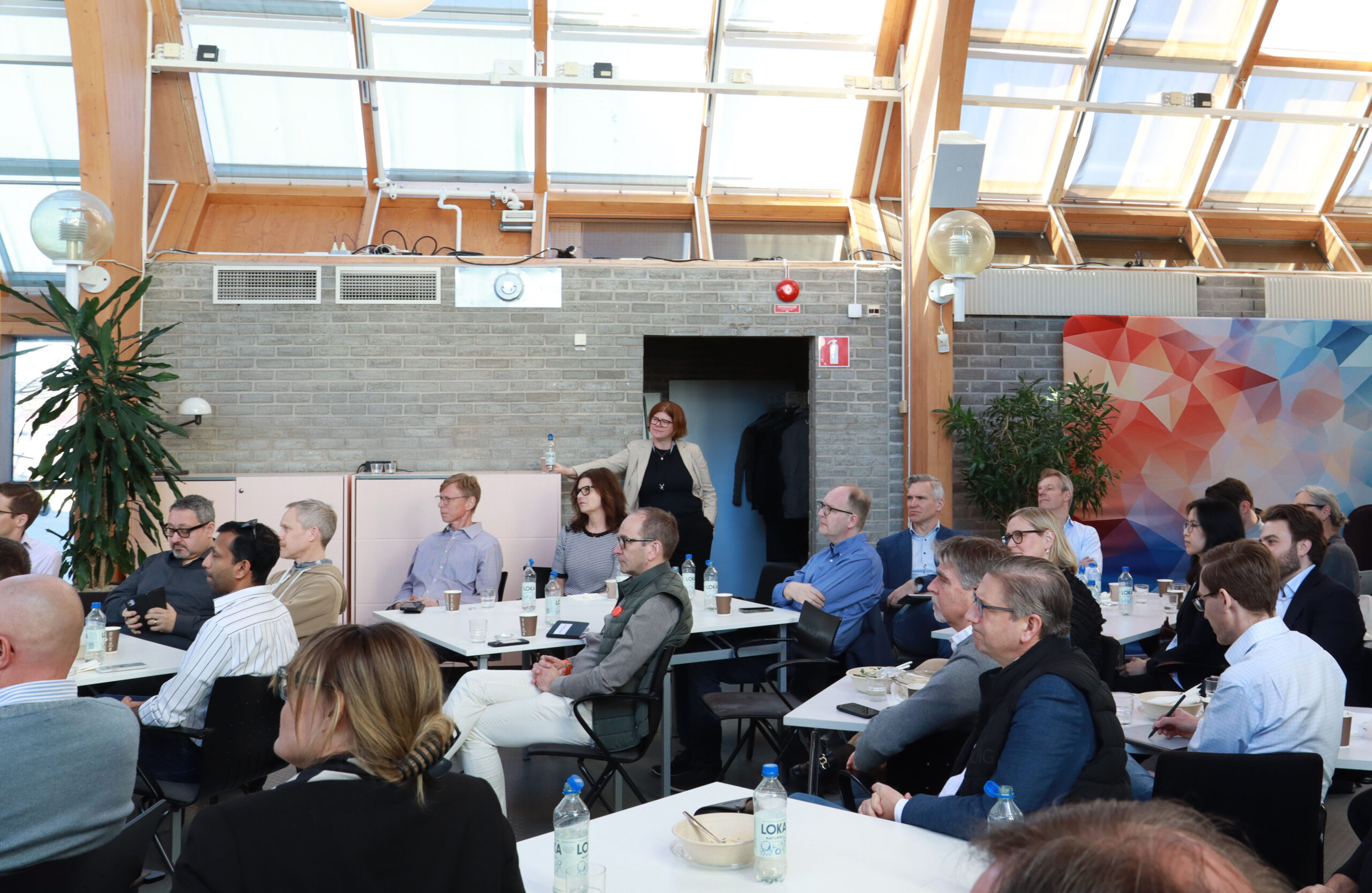
CEO Network: Cybercrime Isn’t Just a Big Business Problem
How small companies are becoming prime targets — and what you can do about it
“The best protection? Make yourself unprofitable for hackers.”
– Karl Emil Nikka, IT Security Specialist at Stöldskyddsföreningen (SSF)
When we think of ransomware or cyberattacks, we often picture high-profile breaches at major corporations. But today’s threat landscape tells a different story: small and medium-sized companies are increasingly under attack – and often the most vulnerable.

In a recent incident, Swedish sports platform Sportadmin was hit with a ransomware attack. While the financial demands haven’t been made public, the attackers didn’t just encrypt the data — they stole it, too. That means even if a company refuses to pay, they still face the threat of sensitive data being leaked or sold.
“There’s usually a negotiation. Hackers know exactly how much you can pay — whether you’re a large enterprise or a small local firm,” says Karl Emil Nikka.
Norsk Hydro: A Case Study in Transparency
One of the most talked-about ransomware cases is from 2018, when global aluminum producer Norsk Hydro was attacked. The company famously responded with full transparency — a rare move at the time. The breach was caused by a single employee opening a malicious email attachment, and the fallout was massive: over $71 million in damages.
What’s important to note? The method of attack was the same as in many small-company breaches — simple phishing.
Why Small Businesses Are Big Targets
Small companies are often used as springboards in larger organizations. Hackers exploit the fact that small firms may lack enterprise-grade cybersecurity, using them as an entry point in supply chain attacks.
At the same time, small businesses often don’t have access to the same tools or resources as big companies – making them easier to breach.
Phishing: Still the #1 Threat
According to Nikka, phishing remains the most common entry point. And it’s getting more sophisticated.
“One of the most convincing phishing attacks I’ve seen was through a Google ad. The ad used Google’s real domain – ads.google.com – but clicking on it led to a fake login page that captured your credentials. It looked completely legitimate.”
His advice?
- Use ad blockers to stop malicious search ads
- Consider privacy-focused search engines where ads can be disabled, e.g., DuckDuckGo
- Install DNS filters on work devices
- Enable multi-factor authentication or even better, passkeys – a phishing-resistant sign-in method already supported by major platforms
What You Can Do Today
Nikka’s key message is this: You don’t need to be hack-proof. But you can make yourself unprofitable and uninteresting to attackers.
Here’s how:
- Train your team on phishing and good cyber hygiene
- Use password managers and passkeys
- Block ads and suspicious domains
- Use DNS filters and secure browsers
- Have a plan for software updates and vulnerability patching
- Visit sakerhetskollen.se — a free, practical resource with step-by-step security guides for individuals and organizations
Final Words
Security isn’t just about confidentiality — it’s about availability and resilience.
And in an era where ransomware-as-a-service is a growing business, no company is too small to be targeted.
The best defense? Stay informed. Stay updated. Stay ahead.
This post CEO Network: Cybercrime Isn’t Just a Big Business Problem first appeared on ideon and is written by matilda
How to Develop Safe Products in a Connected World 7 Apr 2:26 AM (last month)
ideon
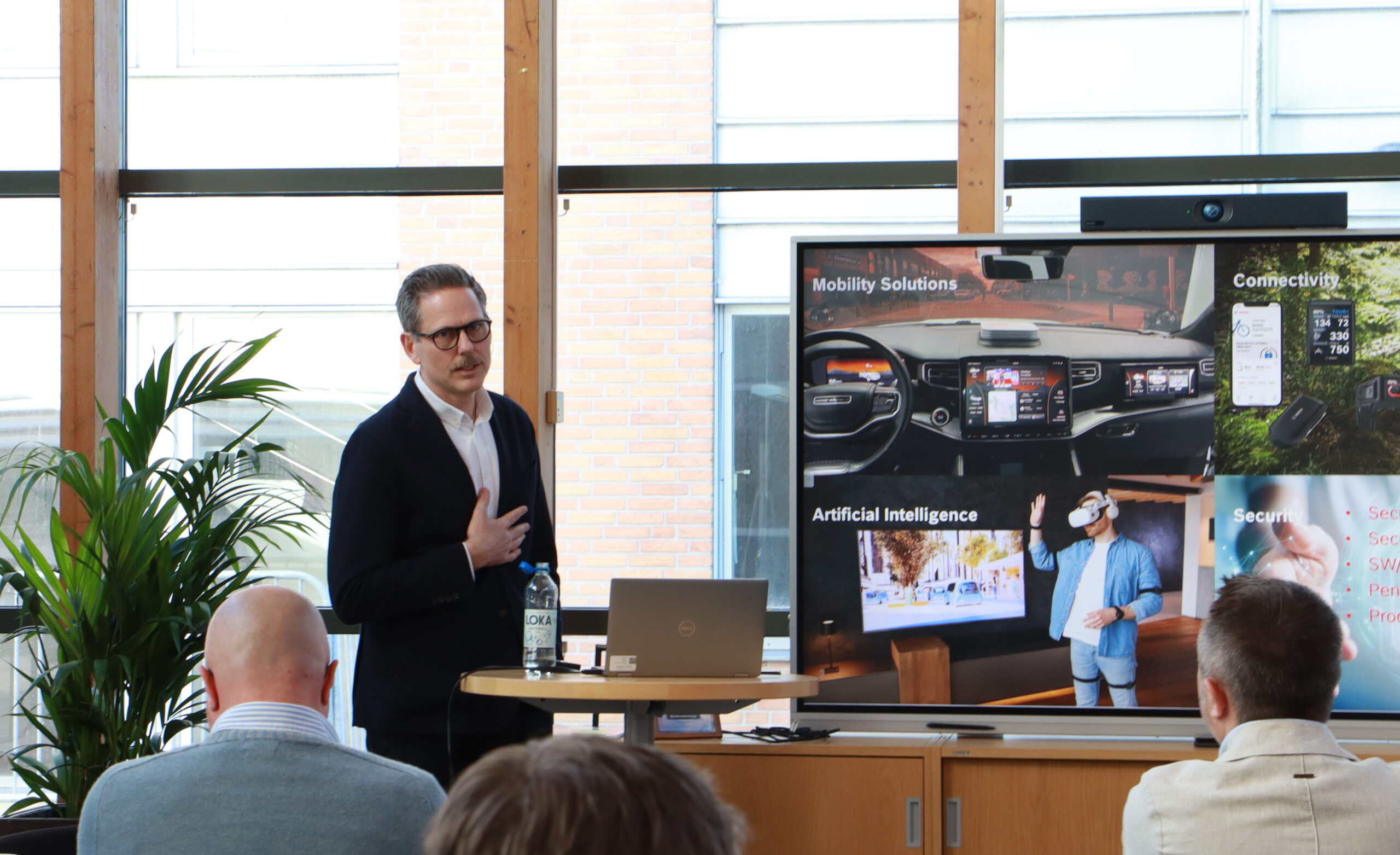
How to Develop Safe Products in a Connected World
Why cybersecurity is non-negotiable in the age of IoT
“The ‘S’ in IoT stands for security.”
– Magnus Alinder, Head of Cybersecurity Management, Bosch R&D Center Lund
Every product that connects to the internet becomes a potential target for cyberattacks — whether it’s a car, a router, or a bicycle. As we enter an era of 20+ billion connected devices, the stakes have never been higher.
“At Bosch R&D Center Lund, we connect Bosch products, applying AI- and then we make them secure.”
Security Is Not Optional
Cybersecurity is often seen as an add-on. It’s not.
“It’s a core function that needs to be built into the development lifecycle – from design to production and beyond. For a small company, a single vulnerability can lead to reputation loss or even business failure.”
Real-world examples show how critical this is.
“A now-infamous Jeep hack allowed attackers to remotely control the vehicle on a highway – without being anywhere nearby. Similarly, a Shimano gear-shift was hacked using a man-in-the-middle attack.”
It’s not science fiction. It’s happening – and more and more frequently.
How We Build Security into Our Products at Bosch
At Bosch R&D Center Lund, cybersecurity is part of everything we do, Magnus Alinder explains:
- We follow a complete and well defined security engineering process
- We train our teams – from product managers to developers – in secure coding practices
- We review and analyze our code through static code analysis, coding standards, and peer reviews
- We secure our assets during production – not just during design
- We maintain security over time – patching vulnerabilities throughout the entire product life cycle
- We define a security baseline – and monitor it regularly
What is secure today may not be secure tomorrow. The cybersecurity landscape changes constantly – with new vulnerabilities emerging every day.
Preparing for What’s Next
The upcoming Cyber Resilience Act (expected to be enforced in the EU by 2027) will make secure design and lifecycle management a legal requirement for connected products. That means businesses – big or small – must have processes and documentation in place to prove they are actively securing their products.
“You will pay for security, one way or another. The real question is: how, and when?”
Join Us at Ideon Science Park
Bosch invites you to join our upcoming Cybersecurity Sessions at Ideon Science Park – open for startups, engineers, and product teams looking to strengthen their security know-how:
📅 May 21 – Cybersecurity for Managers:
Learn how to integrate a security engineering process, defining security concept and integrating requirements into your product development. Book time with a cybersecurity lead and bring your toughest product-related questions.
📅 September 24 – Cybersecurity for Engineers:
Explore hands-on security strategies, from penetration testing to secure code architecture. Book time with a cybersecurity lead and bring your toughest product-related questions.
Find more information on our event calendar
Secure your product. Protect your users. Stay competitive.
Let’s build a secure future, together.
Want to know more? Reach out to:
Magnus Alinder – magnus.alinder@se.bosch.com
Pär Olsson – par.olsson@se.bosch.com
This post How to Develop Safe Products in a Connected World first appeared on ideon and is written by matilda
A Testbed for the Future of Autonomous Systems – Bridging Research and Industrial Innovation 25 Mar 2:53 AM (last month)
ideon
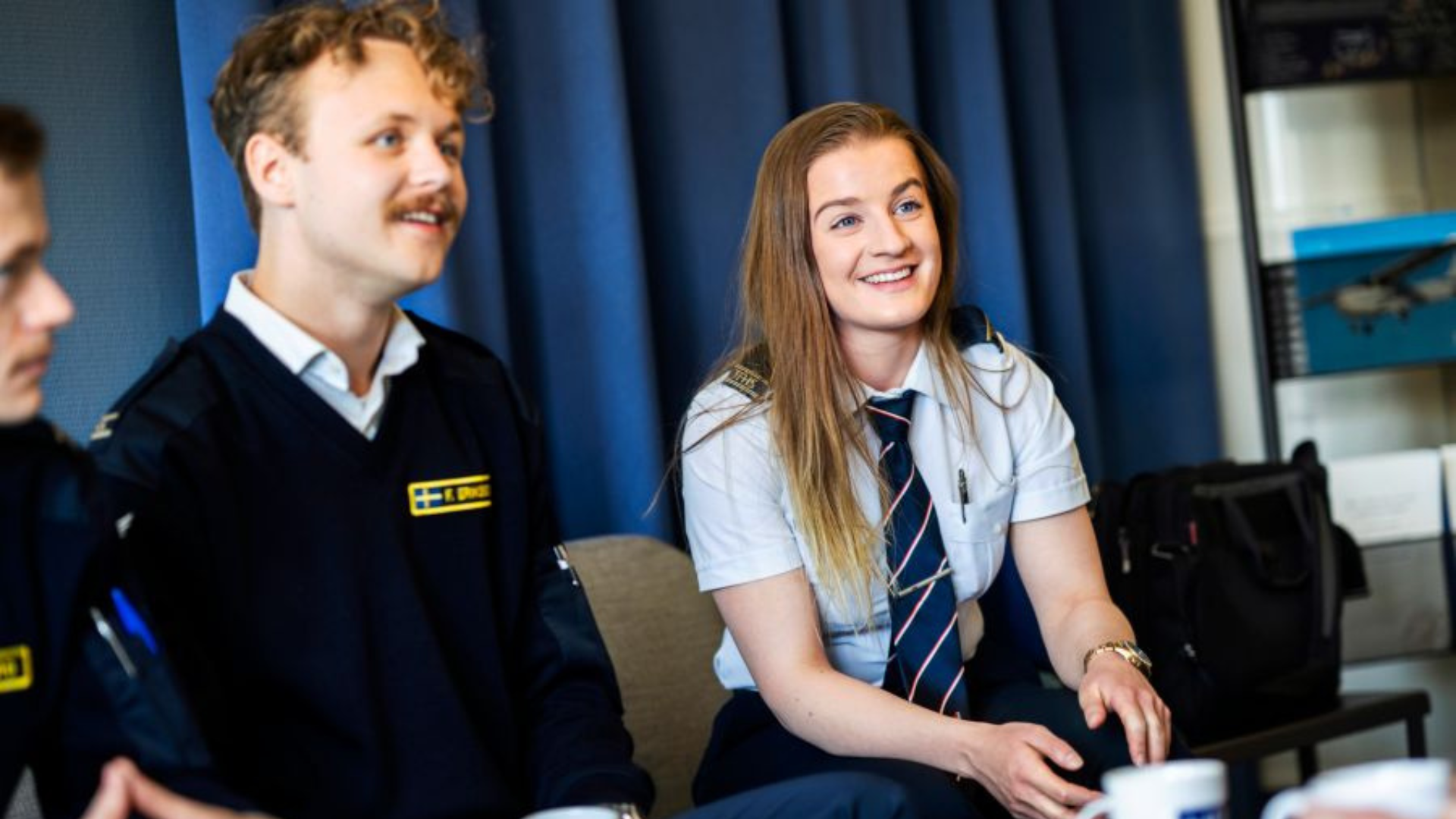
A Testbed for the Future of Autonomous Systems – Bridging Research and Industrial Innovation
Lund University, Annehem, Open Tech, and Ideon Science Park are collaborating to develop a testbed for Unmanned Aerial Systems (UAS) at Campus Ljungbyhed. The testbed already has a strong foundation as an academic environment for research and development, and the ambition is to expand it into a more commercially focused testbed that meets industry needs for testing, verification, and innovation.
Unmanned Aerial Systems (UAS), or drone systems, are more than just flying devices – they are part of a larger platform for autonomous systems that can interact with ground-based vehicles, infrastructure, and other technologies.
Think of UAS as a platform – in the same way that mobile phones became the foundation for an entire market of digital services. Similarly, UAS can be integrated with autonomous ground vehicles, robotics, and sensor networks to create new business opportunities and technological advancements.
Together with our partners, there are great opportunities to create a comprehensive test and innovation environment for the future of integrated transport systems, where both aerial and ground-based units work together safely and efficiently.
Examples of potential UAS applications and how they can interact with ground-based systems:
- Autonomous systems for industrial inspection: Drones that independently inspect industrial facilities to identify maintenance needs.
- Sensor integration for environmental monitoring: Equipping drones with sensors to collect data on air quality, water pollution, or deforestation – where UAS can be integrated with sensors and ground units to monitor environmental changes, power grids, or energy facilities.
- Autonomous deliveries and logistics: Drones working in coordination with self-driving vehicles and robots to streamline transportation.
- Security and surveillance: Drones used for surveillance, disaster response, or search and rescue operations that share real-time information with ground-based systems to enhance safety solutions in industries, ports, or critical infrastructure.
- Smart cities and infrastructure: Use of drones for traffic monitoring, delivery of medical supplies, or infrastructure inspection, where UAS and ground vehicles collaborate to inspect, monitor, and analyze traffic flows, buildings, and road maintenance.
- Indoor applications in factories and warehouses: Drones navigating indoors to transport materials or perform inventory tasks.
Invitation to answer a survey:
We want to inspire you to think creatively about how UAS can be integrated into your operations while also mapping your needs. Your insights will help us identify which challenges can be addressed with the UAS platform and where there is interest in collaboration or real-world testing.
Even if you haven’t used a testbed before, these offer unique opportunities to safely and rapidly test new products, services, or processes. Ljungbyhed combines the advantages of a large airfield with multiple runways, controlled airspace, and close ties to research and technical expertise.
Featured Picture: LUSA – Lund University School of Aviation
This post A Testbed for the Future of Autonomous Systems – Bridging Research and Industrial Innovation first appeared on ideon and is written by Nikita Lourenco-Calling
Qatar and Sweden Expand Innovation Partnership 11 Mar 6:22 AM (2 months ago)
ideon

Qatar and Sweden Expand Innovation Partnership
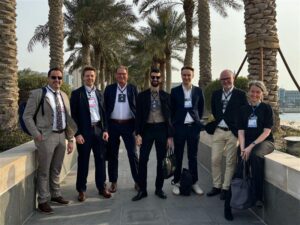 In late February, a Swedish SISP (Sweden’s Incubators and Science Parks) delegation of startups, companies, and innovation leaders traveled to Web Summit Qatar to explore new collaboration methods. A key moment came when Swedish deep-tech company Graphmatech signed a Memorandum of Understanding (MoU) with Qatari company AiSciA.
In late February, a Swedish SISP (Sweden’s Incubators and Science Parks) delegation of startups, companies, and innovation leaders traveled to Web Summit Qatar to explore new collaboration methods. A key moment came when Swedish deep-tech company Graphmatech signed a Memorandum of Understanding (MoU) with Qatari company AiSciA.
The agreement strengthens ties between Sweden and Qatar in innovation and technology. The two companies will work together to develop materials science, apply sustainable AI, and improve industrial processes. By signing the MoU in Doha, they are taking concrete steps toward joint research and commercialization, reinforcing Sweden’s role as a global deep-tech leader and creating new opportunities for both countries.
Anders Nilsson, CEO of Ideon Science Park, where many Swedish deep-tech and industrial tech companies expand, and a member of SISP’s board, highlighted the value of partnerships like this.
“We see Qatar as a gateway to the Middle East, just as Sweden can open doors for Qatari companies in the Nordic region and Northern Europe. Sweden’s innovation ecosystem thrives on global connections. We build partnerships that help startups scale internationally while tackling global challenges like sustainability, industrial transformation, and fair economic growth. Innovation flourishes when diverse perspectives meet. By working together, Qatar gains access to Sweden’s expertise, and Sweden provides Qatari companies with a strategic entry point to Northern Europe.
This post Qatar and Sweden Expand Innovation Partnership first appeared on ideon and is written by cece
Logtech Company SiB Solutions Closes SEK 22 Million Funding Round 5 Mar 5:55 AM (2 months ago)
ideon
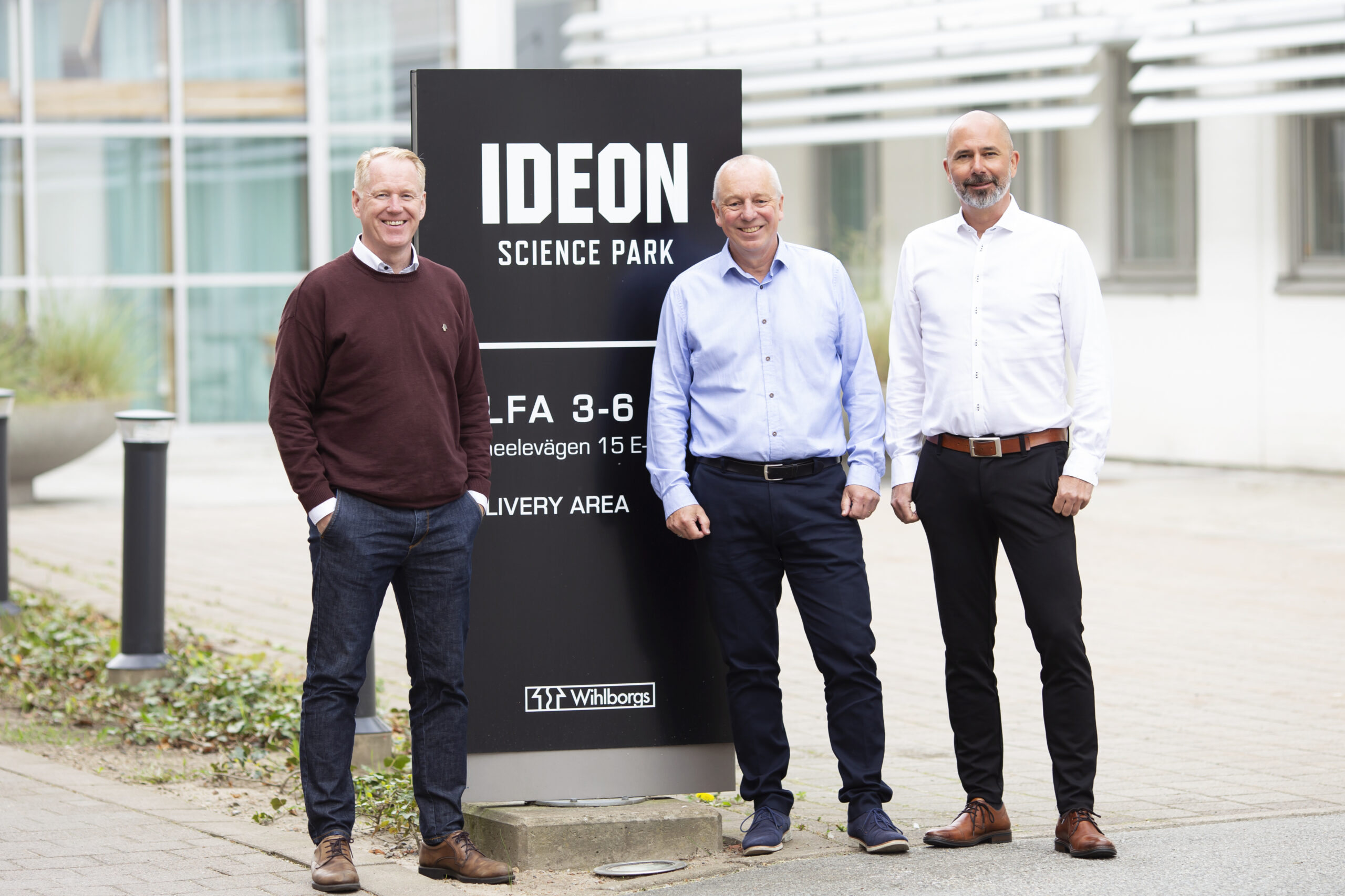
Logtech Company SiB Solutions Closes SEK 22 Million Funding Round
SiB Solutions AB is a leading logtech company based at Ideon Science Park, which integrates cost-saving Intelligent Video and AI Services in the warehouse logistics chain. Sib Solutions just closed a SEK 22 million (US$2.0m/€2.0m) funding round of common stock. In addition to financing the Company’s operations to cash-flow break-even, the funds will accelerate SiB Solutions’ global growth by expanding the sales organization and increasing investments in product development.
Powered by its groundbreaking proprietary software, SiB Solutions offers a subscription-based Intelligent Video and AI Service (SaaS), that provides an effective tool to detect and prevent deviations in goods management. The service can be used throughout the entire transaction chain: Inbound logistics, outbound logistics, and inventory handling within warehouses, manufacturing sites, transportation, last-mile operations, and store logistics.
With approximately 180,000 warehouses globally, warehouse losses from misplaced goods are estimated to amount to US$400bn annually, providing a significant
market potential for SiB Solutions. Founded in 2017, SiB Solutions has sold and implemented its services at 45 logistics sites across 8 countries in Europe and North America. Customers include world-leading Third Party Logistics operators and large industrial companies with global distribution. Global partnerships with Axis Communications, the industry leader in video surveillance, and tech-giant IBM enable a decentralized and seamlessly scalable operation.
In 2024, SiB Solutions’ Contracted Annual Recurring Revenue (“CARR”) increased by 40 percent and CARR per site increased by 25 percent. Lead investors in the financing were Willard Ahdritz, founder and chairman of Kobalt Music Group, and former investment banker Svante Andreen, with participation from existing shareholders, and other new investors.
“With a fully funded business plan and a strengthened ownership structure, we are now accelerating SiB Solutions’ development and global footprint as a soon-to-be profitable company. We are very proud of what we as a team have achieved so far and enthusiastic about the future”, says Stefan Borg, founder and CEO of SiB Solutions.
For more information, please contact
CEO Stefan Borg
Tel: +46 (0)705 784 667
This post Logtech Company SiB Solutions Closes SEK 22 Million Funding Round first appeared on ideon and is written by cece